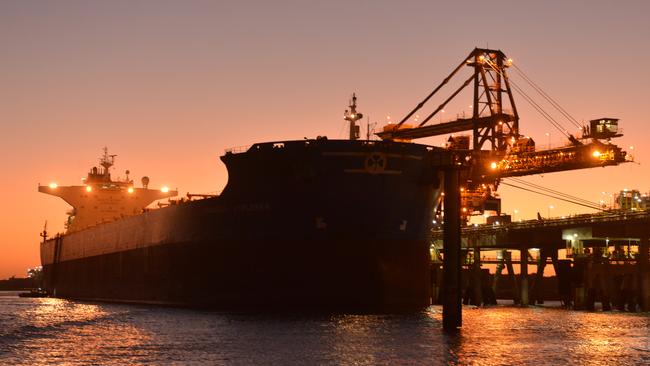
A surplus — and, at $5.9bn, a bigger than expected one at that — meant more demand for Australian dollars, as foreigners bought more of our goods and services than we bought of theirs.
But the Aussie dollar, under siege for months amid fears of a Chinese economic slowdown, dropped below US67 cents almost immediately on Tuesday, near the lowest level at which it’s traded in over a decade.
Traders were right to fob off the figures.
Our surplus arose more from the confluence of Chinese economic resilience and ongoing supply disruptions in the Brazil than any new-found ingenuity on our part.
Iron ore and coal prices have vastly exceeded expectations, showering our resource exporters — and the taxman — with cash.
Ahead of national accounts on Wednesday which could see the economy contract for the first time since 2016, the June quarter current account figures did nothing to boost confidence about the outlook.
China is still slowing amid an escalating trade war with the US, and Brazilian iron ore supply will eventually be restored.
The balance of trade in goods and services, one half of the current account, for the three months to the end of June was almost $20bn. The other half of the current account, what’s called net primary income, continued in the red, to the tune of $14bn. That means our dividend and interest income from foreigners is less than foreigners receive from us.
Taking a big step back from this three-month window, the current account for the whole of the 2019 financial year was well in deficit. Our net foreign debt to the rest of the world rose to a new record high too, increasing to $1.14 trillion.
That’s more, as a share of our GDP, than practically any other developed nation.
All up, the $5.9 billion current account surplus, for an economy with GDP of almost $2 trillion, is a loose change.




Currency traders have blown a big raspberry at the nation’s first current surplus account since 1975.